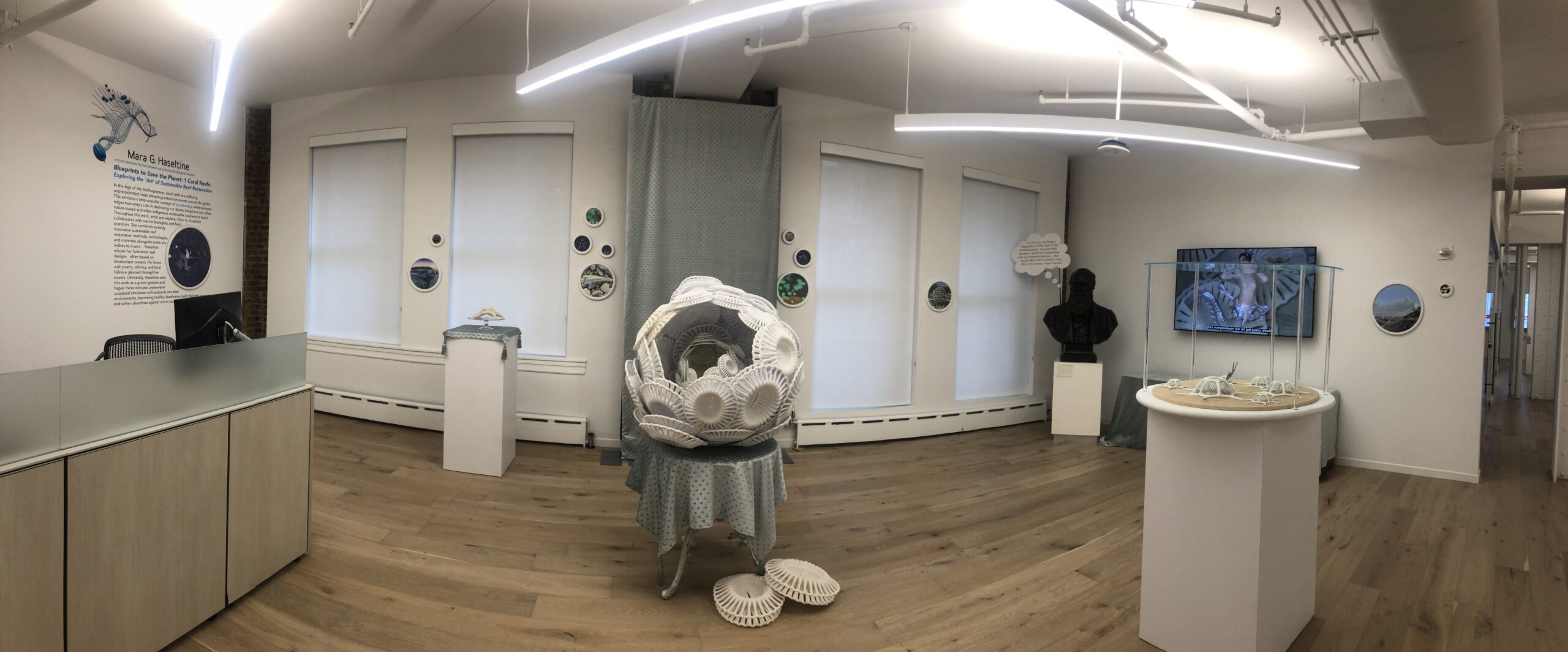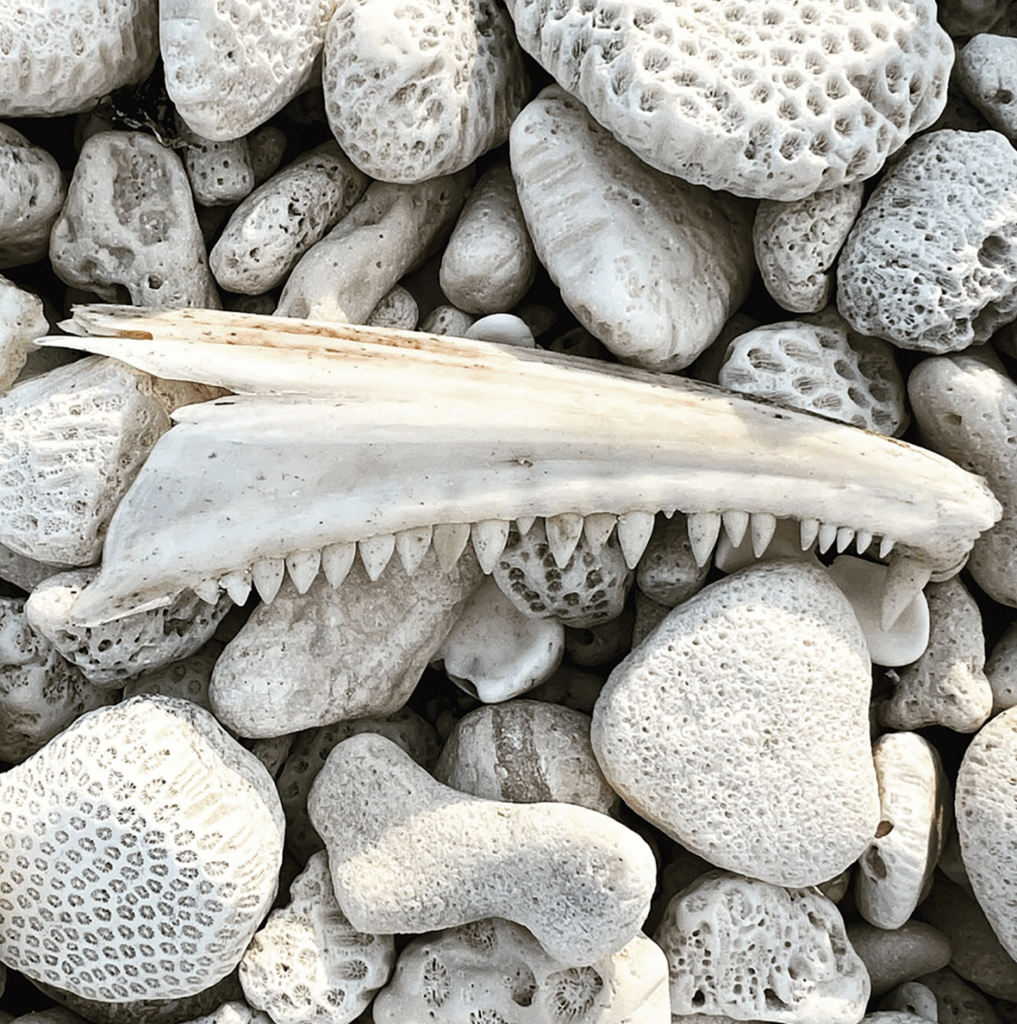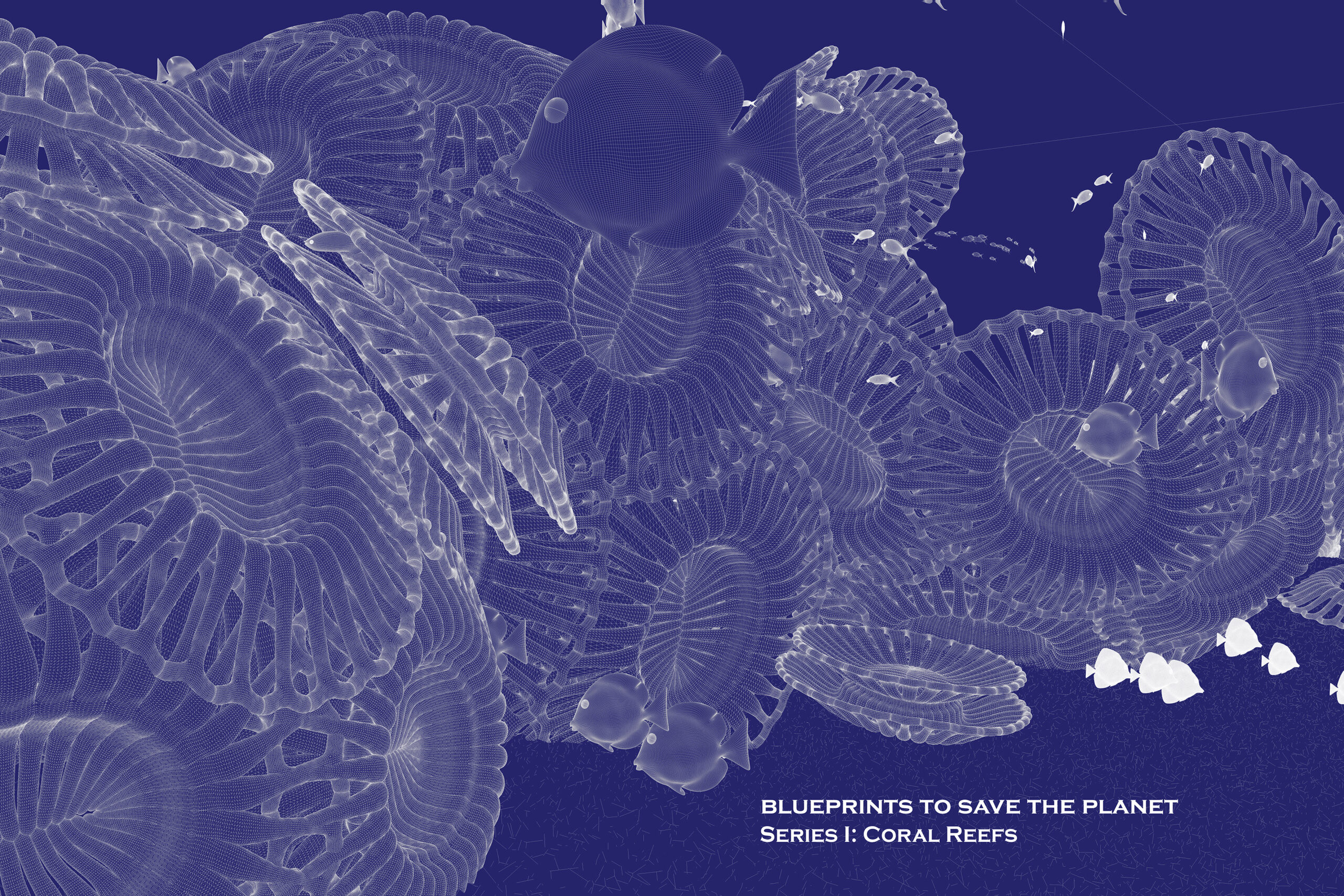The Rococo Cocco Reef depicts outsized renditions of microscopic coccolithophore skeletons, composed of calcium carbonate plates or scales called coccoliths.
Coccolithophores are single- celled phytoplankton plankton or protists that bloom prolifically in oceans across the globe. Their massive blooms help regulate the atmosphere in crucial ways: they produce oxygen through photosynthesis; their coccoliths skeletons scatter lighter than they absorb, and creating an albedo effect lightening the water they bloom. This in in turn creates cloud cover and cools the surface temperature of our planet. Their calcite skeletons also absorb carbon dioxide or greenhouse emissions.
At the end of the coccolithophore life cycle, these coccolith skeletons sink to the bottom of the sea floor and become a carbon sink, thus effectively taking harmful emissions out of the atmosphere. The Rococo Cocco Reef is based on the coccolith skeletons after they have sunk to the bottom of the ocean and their coccolith skeletons have begun disassembling on the ocean’s floor.

This maquette portrays living artwork, educational tool, eco-touristic dive site, The Rococo Cocco Reef habitat for fish and coral to thrive, and a reef brake that attenuates waves protecting shorelines endangered by rising sea levels due to climate change. The Rococo Cocco reef will be created a utilizing substrate composed of recycled bleached coral, and 3D printed into the coccolith plates. Coral larvae are naturally attracted to calcium carbonate . Coccolith discs are composed of calcium carbonate like the material that The Rococo Cocco Reef will be made of this sculpture will itself become a carbon sink, mimicking the microscopic structures portrays.



No responses yet